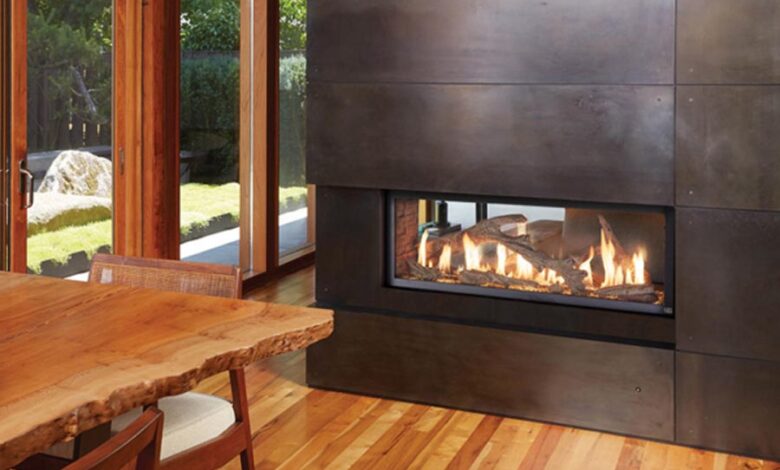How to Spot the Signs Your Chimney Needs Maintenance

Your chimney plays a vital role in ensuring the safety and efficiency of your home’s heating system, especially if you have a fireplace or wood stove. It’s easy to overlook chimney care until a problem becomes obvious—or dangerous. Knowing the signs that indicate your chimney needs maintenance can help you address issues early, saving you time, money, and potential safety risks.
-
Excessive Creosote Buildup
What It Is: Creosote is a byproduct of burning wood, and it accumulates inside the chimney flue as a thick, tar-like substance. Over time, creosote can build up to dangerous levels, increasing the risk of chimney fires.
Signs to Watch For: Look for black, flaky, or shiny deposits inside your fireplace or at the chimney’s opening. You might also notice a strong, smoky odor coming from the fireplace, especially when it’s not in use. If you can see thick layers of creosote or feel buildup along the flue, it’s time for a professional cleaning.
Why It Matters: Excessive creosote is highly flammable and one of the leading causes of chimney fires. Regular chimney maintenance in Deer Park is essential to keep buildup at safe levels.
2. Cracked or Damaged Chimney Crown
What It Is: The chimney crown is the topmost part of your chimney, designed to protect it from water damage and debris. It acts as a barrier, keeping rain, snow, and animals out of the chimney flue.
Signs to Watch For Visible cracks, chipping, or missing pieces on the chimney crown are clear indicators of damage. You might also notice water stains inside your fireplace or along the chimney walls, indicating that moisture is entering through the damaged crown.
Why It Matters: A damaged chimney crown can allow water to seep into the chimney, leading to deterioration of the chimney structure, rusted dampers, and mold growth. Repairing or replacing a damaged crown can prevent costly water damage and extend the life of your chimney.
3. Crumbling Mortar and Brickwork
What It Is: The mortar and bricks that make up your chimney are exposed to the elements year-round. Over time, weather conditions like rain, snow, and freeze-thaw cycles can cause the mortar to weaken and deteriorate.
Signs to Watch For: Check for visible cracks, crumbling mortar, or loose bricks on the exterior of your chimney. You may also notice pieces of brick or mortar on the ground near the base of your chimney.
Why It Matters: Damaged mortar and brickwork can compromise the structural integrity of your chimney, making it unsafe and more susceptible to collapse.
-
Rusted or Damaged Damper
What It Is: The damper is a movable plate inside your chimney that opens and closes the flue, controlling airflow and preventing drafts when the fireplace is not in use. A functioning damper is essential for efficient fireplace operation and safety.
Signs to Watch For: A damper that’s difficult to open or close, or one that sticks, is a sign of rust or damage. You might also notice a metal-on-metal grinding noise when operating the damper, indicating corrosion.
Why It Matters: A rusted or stuck damper can allow smoke and harmful gases like carbon monoxide to enter your home instead of being properly vented outside. Regular inspection and maintenance of the damper ensure the safe and efficient operation of your fireplace.
Conclusion
By knowing how to spot the signs that your chimney needs attention, you can address issues early and avoid costly and potentially dangerous problems. If you notice any of the signs mentioned above, don’t delay in contacting a professional chimney service provider for an inspection and necessary repairs. Keeping your chimney in good condition not only protects your home but also provides peace of mind for you and your family.
FAQs
What causes creosote buildup in chimneys?
Creosote buildup occurs when wood or other fuels are burned and the byproducts condense inside the chimney flue. Poor ventilation, burning unseasoned wood, and incomplete combustion can all contribute to creosote accumulation.
Can I perform chimney maintenance myself?
While some basic maintenance tasks like visual inspections can be done by homeowners, it’s best to leave chimney cleaning, repairs, and detailed inspections to certified professionals to ensure safety and thoroughness.
What should I do if I notice water damage in my chimney?
If you notice signs of water damage, such as rust, staining, or musty odors, contact a chimney professional for an inspection. They can identify the source of the moisture and recommend appropriate repairs, such as waterproofing or crown repair.


